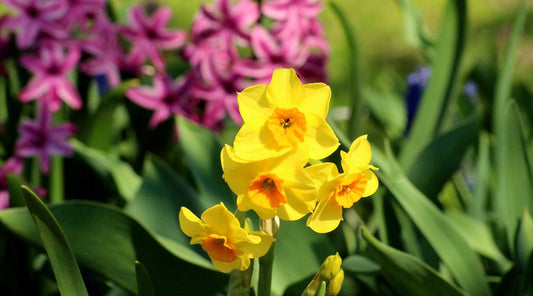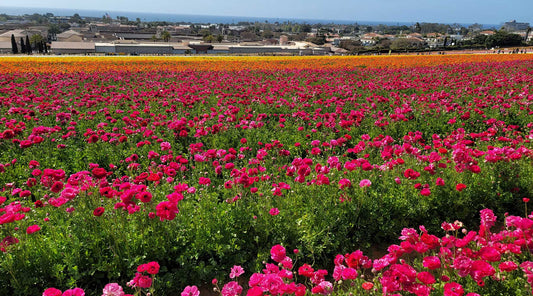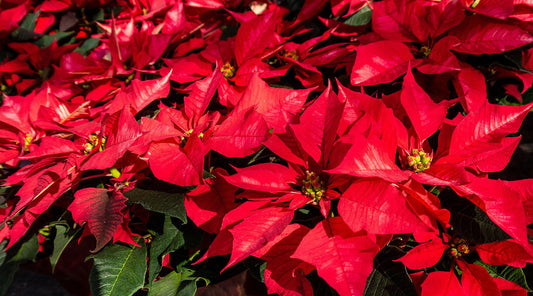Flower bulbs are the ultimate Cinderella story. A homely, unassuming, root is transformed into a beautiful, fragrant flower. Well, it can be anyways. As most gardeners know, it’s not always that simple. In order to get the payoff you want, you must follow some bulb planting rules. They’re actually a huge pain at times, but we promise it’s worth it and we’re here to make it easier.
Types of Bulbs
When you hear “bulb”, you probably picture something like a tulip bulb which has the classic teardrop shape. These are considered true bulbs, but there are many other variations that gardeners love to plant and grow. In this section, we’re going to cover the most common bulb types.
True bulbs are known by their layers. Like Shrek says “onions have layers” and onions are a great example of true bulbs, but we’re here to talk about flowers because they smell much better. At the center of the bulb is the plant shoot which will eventually break through your soil and form a beautiful flower.
Within the True Bulb category, there are two sub-categories.
- Tunicate Bulbs have a tough outer layer or “tunic” for which they are named, that is papery in texture and keeps the inside of the bulb protected. The most commonly grown tunic bulb is the tulip.
- Imbricate Bulbs are not protected by the tunic layer, and therefore require a bit more love and care prior to planting. For a successful imbricate bulb, the bulb must be kept moist up until the time of planting. Lilies are the most commonly seen imbricate bulbs.
Corms are often categorized as bulbs because they look very similar, but as we know they are not true bulbs but rather the solid cousins. Corms are missing the signature layers that true bulbs have, but they operate in much the same way. They protect the good stuff on the inside from being damaged.
Tubers are not protected by a tough outer layer like a true tunicate bulb. Instead, they have many eyes that watch for any sign of danger. Well not actually, but they do have eyes that are growing points. We’ll take a potato as an example; you know when you leave a potato in your cupboard a little too long and it starts sprouting all over the place? Those sprouts are growing from the eyes. It sounds kind of creepy, but it makes for a hardy plant.
Rhizomes look a bit more unique than other bulb types. They grow horizontally instead of straight up and look more like roots than bulbs. The nice thing about rhizomes is that they are super easy to divide and propagate.
Bulblets are the cute little sister to the true bulb. Unlike bulbs, they can form on either the bottom or the top of a plant and have little clusters. Garlic is a great example of a bulbet, as it is sectioned off into smaller parts.

Where to Buy the Best Bulbs
Here at Yard Butler, we love to buy locally or from smaller businesses when possible; the quality is usually much higher than that of a big box store. As a first step, head to Google to see if you have any local nurseries that offer bulbs. Be sure to contact them in July or August because many bulbs require refrigeration for several weeks before they’re ready to plant.
We also know that purchasing anything right now is... complicated. It’s safer to buy online and have your bulbs shipped to you. It’s also just easier, and gardeners deserve a little break once in a while! Luckily, you can still support smaller, high-quality businesses, and shop online. One of our recommendations is Michigan Bulb. They offer hundreds of plant varieties and plenty of bulbs for you to peruse. This site also offers a ridiculous amount of information on the details of your bulb: when to plant, where to plant, when they’ll bloom, etc. The best part is you can enter your zip code and the bulbs will be shipped to you at the exact right time. There’s no guesswork on your part, which makes your chances of success much higher.
Maybe you’re like us and you love tulips, well Eden Brothers has over 60 varieties of just tulips. You can sort the bulbs based on color, height, the speed of their growth, whether they attract bees, etc. The list just goes on and on. If you’re a little more particular about your garden this is the perfect option for you.
If you have a history of your plants dying, either by your own hand or due to plants just being a huge pain, we suggest purchasing from Brecks. They’ve been around since 1818, and grow their bulbs in Holland which is notorious for its sprawling, brightly colored tulip fields. If you want to bring some of that Dutch magic home, look no further. The reason we recommend Brecks to the “gardening challenged” is because they will replace your plant if it ever dies, regardless of where it’s at in its lifespan. Brecks will also suggest bulbs to you based on your hardiness zone which gives you that extra edge up. If you’re feeling crazy, maybe buy some bulbs from each of these vendors and let us know which are your favorites!
Refrigerating your Bulbs
Something that surprises a lot of first-time bulb planters is that many bulbs need a chilling period. The key is to create the environment that the bulbs need to thrive, and most areas of the United States simply don’t have long enough Winters to allow the bulbs to flower as early as they need to. The most common bulbs that need refrigeration are tulips and narcissus, but bulbs that bloom in late season like amaryllis and ranunculus don’t need refrigeration.The bulbs that do need refrigeration usually require about 12-16 weeks, but it varies from flower to flower. In colder climates, you could be good to go in as few as six weeks so refer to the expertise of the vendor you get your bulbs from, or simply give it a quick Google search. Just make sure that you do your research well in advance so that you’re not too late. And be sure to come back to this site often for more gardening and planting tips.






